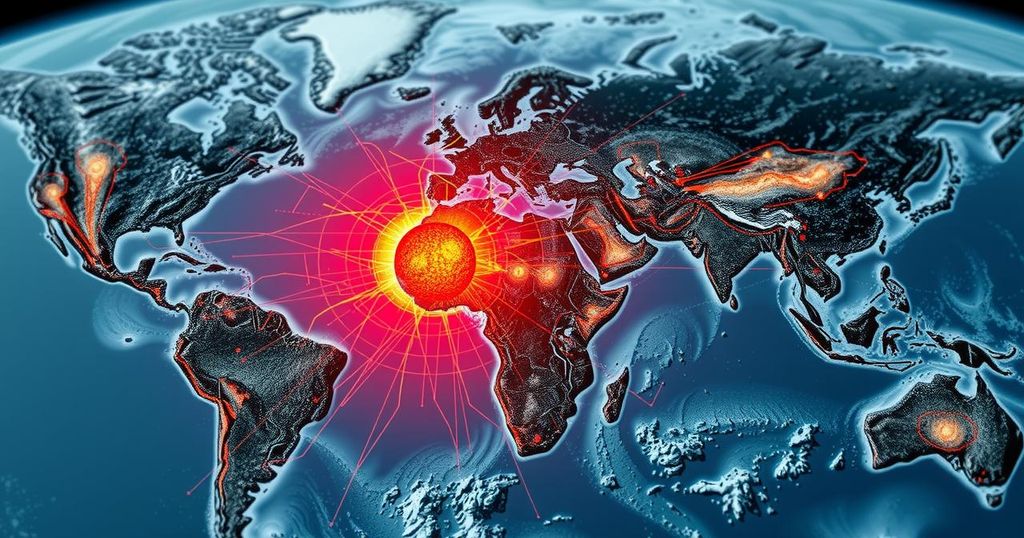A 6.1-magnitude earthquake occurred in Calama, Chile on January 2, following several notable earthquakes including a 4.7-magnitude quake in California and a significant 6.7-magnitude event in the Kuril Islands. The United States Geological Survey reported these events, emphasizing ongoing seismic activity in various regions.
On January 2, a 6.1-magnitude earthquake was recorded in Calama, Chile, with a depth of 99 kilometers (approximately 61.5 miles), as per the United States Geological Survey (USGS). This seismic event occurred shortly after a 4.7-magnitude earthquake was detected in Cobb, California on January 1, located at a shallow depth of 1.1 kilometers (about 0.7 miles).
Additionally, on December 30, a 3.3-magnitude earthquake struck Nikolski, Alaska, at a depth of 39.5 kilometers (around 25 miles). This incident followed a 3.3-magnitude quake in Fort Bidwell, California, on the same day, with a depth of 3.4 kilometers (approximately 2.1 miles). The seismic activities are part of a series of earthquakes that have been noted over the previous week, including a significant 6.7-magnitude earthquake on December 27 near the Kuril Islands, which occurred at a depth of 162.6 kilometers (about 101 miles).
Further instances include a 3.6-magnitude earthquake in McCarthy, Alaska, recorded on December 26, which had a depth of 8.1 kilometers (about five miles), and a 3.0-magnitude quake in Clayton, California on December 25 at a depth of 13.2 kilometers (about 8.2 miles). The chain of events culminated with a 5.9-magnitude earthquake in Guisa, Cuba, on December 23, at a depth of 22.2 kilometers (approximately 13.8 miles).
Earthquakes regularly occur worldwide due to the natural movement of tectonic plates beneath the Earth’s surface. Regions like California, Alaska, and the Kuril Islands are particularly susceptible to seismic activity due to their geographical locations along seismic fault lines. The recent earthquakes reported reflect a pattern of activity that is consistent with historical seismic behavior in these regions, highlighting the importance of geological monitoring by agencies such as the USGS to ensure public safety and awareness.
In summary, the past week has seen significant seismic activity across various locales, including a major 6.1-magnitude earthquake in Chile and several notable earthquakes in California and Alaska. Such events underscore the importance of geological preparedness and monitoring in earthquake-prone regions. Continuous updates from reliable sources like the United States Geological Survey are crucial for public awareness and safety in the face of such natural occurrences.
Original Source: wpoc.iheart.com






